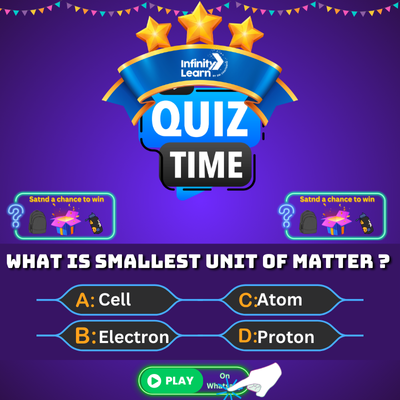Understanding the globe involves learning about latitudes and longitudes, which are essential for mapping the Earth. Latitudes are the imaginary lines that run horizontally around the globe. They measure how far north or south a place is from the Equator, which is the starting point at 0 degrees latitude. Important lines of latitude include the Tropic of Cancer and the Tropic of Capricorn.
Longitudes, on the other hand, are imaginary lines that run vertically from the North Pole to the South Pole. They measure how far east or west a place is from the Prime Meridian, which is 0 degrees longitude, passing through Greenwich, England. These lines help us pinpoint exact locations on the globe by creating a grid system.
Learning about these lines through Globe: Latitudes and Longitudes MCQs will make it easier for you to understand how we navigate and map our world. This collection of MCQs will help you understand how the globe is divided by lines of latitudes and longitudes, which are essential for locating places accurately on the Earth. These imaginary lines criss-cross the globe, creating a network that helps in navigation and understanding our planet better.
By practicing these questions, you will gain a solid grasp of the basic concepts and be able to apply them in real-world situations. Whether you’re preparing for exams or just curious about how the world is organized, these Globe: Latitudes and Longitudes MCQs are an excellent resource for enhancing your geographical knowledge. Let’s embark on this educational journey and master the skills of mapping the globe!
Globe: Latitudes and Longitudes Class 6 MCQs
Ques. What accurately describes a globe?
(a) Earth
(b) None of these
(c) Both (a) and (b)
(d) True model of the earth
Ans. (d) True model of the earth
Ques. Identify the circle of latitude at 66 ½° north.
(a) Antarctic circle
(b) Longitude
(c) Arctic circle
Ans. (c) Arctic circle
Ques. How do the globe and the earth differ?
(a) continents and oceans
(b) none of these
(c) size
(d) shape
Ans. (c) size
Ques. Which geographical line divides the earth into the northern and southern hemispheres?
(a) Tropic of Cancer
(b) Arctic Circle
(c) Equator
(d) Tropic of Capricorn
Ans. (c) Equator
Ques. The equator is best described as:
(a) Imaginary straight line
(b) Imaginary rectangular line
(c) Imaginary triangular line
(d) Imaginary circular line
Ans. (d) Imaginary circular line
Ques. How is the Earth shaped?
(a) A perfect sphere
(b) A sphere which flattens at the poles and bulges at the centre
(c) A sphere which bulges at the poles and at the centre
(d) A sphere which bulges at the poles and flattens at the centre
Ans. (b) A sphere which flattens at the poles and bulges at the centre
Ques. What line divides the world into the northern and southern hemispheres?
(a) Equator
(b) Longitude
(c) Latitude
(d) Prime meridian
Ans. (a) Equator
Ques. The 0 degree Meridian is known as:
(a) Prime Standard
(b) Greenfield
(c) Prime Meridian
(d) Equator Prime
Ans. (c) Prime Meridian
Ques. Which zone lies between 66°30′ S and the poles?
(a) Frigid Zone
(b) All of these
(c) Temperate Zone
(d) Torrid Zone
Ans. (a) Frigid Zone
Ques. What line divides the earth into the eastern and western hemispheres?
(a) prime meridian
(b) Equator
(c) north pole
Ans. (a) prime meridian
Ques. The coldest climate heat zone is:
(a) Torrid Zone
(b) Northern Temperate Zone
(c) either of the Temperate Zones
(d) The Frigid Zones
Ans. (d) The Frigid Zones
Ques. Through which location does the Prime Meridian pass?
(a) Greenfield
(b) Greenshire
(c) Greenwich
(d) Greenwood
Ans. (c) Greenwich
Ques. At what latitude is Mauritius located?
(a) 23° 30′ S
(b) 0°
(c) 10° N
(d) 20° S
Ans. (d) 20° S
Ques. The local time at 82°30′ E longitude, standardized throughout India, is known as:
(a) local time of India
(b) none of these
(c) both (a) and (b)
(d) Indian Standard Time (IST)
Ans. (d) Indian Standard Time (IST)
Ques. Dibrugarh is located in which Indian state?
(a) Assam
(b) Nagaland
(c) Arunanchal Pradesh
(d) Mizoram
Ans. (a) Assam
Ques. Which degree marks the equator’s location on Earth?
(a) 20 degree
(b) 90 degree
(c) 0 degree
(d) 180 degree
Ans. (c) 0 degree
Ques. What is the Standard Meridian for India?
(a) 88°30′ E
(b) 86°30′ E
(c) 82°30′ E
(d) 84°30′ E
Ans. (c) 82°30′ E
Ques. Latitude for the equator is set at which degree?
(a) 2
(b) 1
(c) 0
Ans. (c) 0
Ques. What are latitude and longitude lines?
(a) A real line that divides the Earth
(b) An imaginary line that divides the Earth
(c) Thick and thin line that divide the Earth
(d) Long and short line that divide the Earth
Ans. (b) An imaginary line that divides the Earth
Ques. Identify the parallel of latitude known as Tropic of Cancer.
(a) 0°
(b) 23° 30′ N
(c) 66° 30′ N
(d) 23° 30′ S
Ans. (b) 23° 30′ N
Ques. What are meridians of longitude?
(a) The lines running from north pole to the south poles
(b) The lines running from north pole to the east poles
(c) The lines running from north pole to the west poles
(d) The lines running from east pole to the south poles
Ans. (a) The lines running from north pole to the south poles
Ques. How many meridians span across the globe?
(a) 180
(b) 360
(c) 90
(d) 181
Ans. (b) 360
Ques. What is the time difference between Greenwich and India?
(a) no difference
(b) 3 hours
(c) 5 hours 30 minutes
(d) 12 hours 30 minutes
Ans. (c) 5 hours 30 minutes





